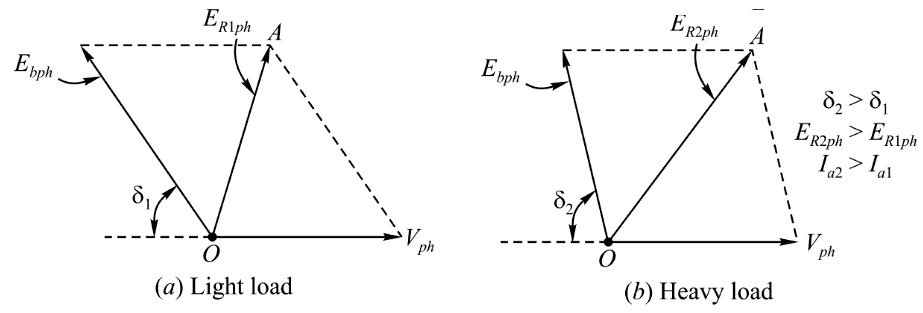The speed of a synchronous motor
Right Answer is:
Adjusts itself to new equilibrium speed whenever load changes.
SOLUTION
The speed of a synchronous motor adjusts itself to a new equilibrium speed whenever load changes.
Effect of Load on Synchronous Motor
As the load on the synchronous motor increases, there is no change in its speed. But what gets affected is the load angle δ i.e., the angle by which the rotor axis retards with respect to the stator axis. Torque produced in synchronous motor depends on the load angle δ.
Hence as load increases, δ increases but speed remains synchronous.
As δ increases, though Ebph and Vph magnitudes are the same, displacement of Ebph from its ideal position increases. Hence the vector difference Vph − Ebph increase. As synchronous impedance is constant, the magnitude of Iaph drawn by the motor increases as load increases. This current produces the necessary torque which satisfies the increased load demand. The magnetic locking still exists between the rotor and stator.

Step by step Procedure
- Whenever the load changes the torque angle δ changes the and hence the armature current increases irrespective of its excitation.
- When load increases, basically you are increasing the mass of the rotating objects which is coupled to the motor’s rotor. This asks for a higher torque supply this will result in torque angle getting increased, which means to say the rotor lags a bit.
- Because of magnetic locking, the motor again runs at sync speed. ( motor running slow is reflected as an increase in torque angle).
- Thus the speed of a synchronous motor adjusts itself to a new equilibrium speed whenever load changes.
- Thus synchronous motor has the ability to adjust itself to achieve synchronous speed by changing the load angle.
